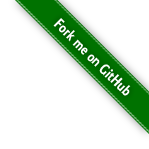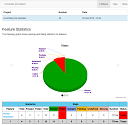
Here is a quick reminder of the Agile Manifesto’s content from 2001, followed by some examples with code, doc, charts, and tasks (classic VS agile way).
Content
- Manifesto
- Examples
Manifesto
Manifesto for Agile Software Development (2001)
We are uncovering better ways of developing
software by doing it and helping others do it.
Through this work we have come to value:
- Individuals and interactions over processes and tools
- Working software over comprehensive documentation
- Customer collaboration over contract negotiation
- Responding to change over following a plan
That is, while there is value in the items on
the right, we value the items on the left more.
Twelve Principles of Agile Software You can read more at “Twelve Principles of Agile Software“.
Comment
Some people think that Agile means “no documentation”, “no obligation to the client”, “no planning”.
It’s false.
As the authors said, “we value the items on the left more“, more doesn’t mean only/not-the-others.
Examples

You can see Agile like this:
1. Individuals and interactions over processes and tools
Example with task management:
Instead of using a dedicated software like JIRA at start, with accounts, hosting, user training, etc.

You can just use post-it on a wall, let people move it themselves. Then change this process/tool later on if needed, as the project grow.

2. Working software over comprehensive documentation
Example with Java code:
Instead of doing this classic POJO.
/**
* The object containing the value.
*/
public class ClassicClass {
/**
* The value
*/
private String value;
/**
* Getter for value.
* @return the value
*/
public String getValue() {
return value;
}
/**
* Setter for value.
* @param value the value to set
*/
public void setValue(String value) {
this.value = value;
}
}
You can use the same amount of time doing this:
/**
* Value Object.
* The value is mandatory, and read-only.
*/
public class AgileClass {
private String value;
public String getValue() {
return value;
}
public AgileClass(String requiredValue) {
if(requiredValue== null | requiredValue.isEmpty())
thorw new IllegalArgumentException("value must not be empty!");
this.value = requiredValue;
}
}
It has stronger code (null check, not setter), auto-documented (requiredValue name), with only relevant documentation (class header)
3. Customer collaboration over contract negotiation
Example with features:
Instead of doing all features requested by your client without hesitation.

1. Authent
2. Profile
3. Profile Notification
4. Display Business model 1
6. Display Business model 2
You can : Ask him which are the keyfeatures and start only with it, then show him how much each of them cost, and let him decide if some of them are really mandatory for him (it’s not always the most expensive feature that adds the most value)

1. Display Business model 1-1 (8 pts)
2. Display Business model 2 (5 pts)
3. Authent (5 pts)
4. Display Business model 1-2 (13 pts)
5. Profile (3 pts)
(6. Profile Notification (8 pts))
4. Responding to change over following a plan
Example with project delay change:
Instead of just reevaluating tasks randomly.

You can evaluate the project feasibility over time (using the burndown chart). Then remove/transform/add features or stop the project before it’s too late.

Reference
http://agilemanifesto.org/ http://agilemanifesto.org/
https://en.wikipedia.org/wiki/Agile_software_development#The_Agile_Manifesto https://en.wikipedia.org/wiki/Agile_software_development#The_Agile_Manifesto
https://en.wikipedia.org/wiki/Burn_down_chart https://en.wikipedia.org/wiki/Burn_down_chart
Source
https://github.com/DamienFremont/damienfremont.com-blog-labs/tree/master/20171110-agile-manifesto-reminder https://github.com/DamienFremont/damienfremont.com-blog-labs/tree/master/20171110-agile-manifesto-reminder
Origin
https://damienfremont.com/2017/11/10/agile-manifesto-reminder/











